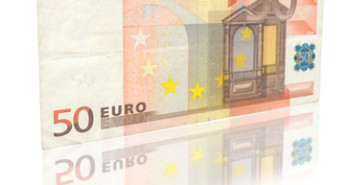EUR/USD is showing some volatility in Wednesday’s European session. The pair has moved lower after a senior member of the ECB hinted that an interest rate cut could be in the cards. In today’s economic releases, French data disappointed, as Final Non-Farm Payrolls and CPI fell below market expectations. The markets will be keeping a close eye on Eurozone Industrial Production. In the US, there are a host of releases, highlighted by Core Retail Sales and Retail Sales.
Here is a quick update on the technical situation, indicators, and market sentiment that moves euro/dollar.
EUR/USD Technical
- Asian session: Euro/dollar was quiet, as the pair touched a low of 1.3023 and then consolidated at 1.3035. In the European session, the pair has edged lower.
- Current range: 1.3000 to 1.3030.
Further levels in both directions:Â 
 Â
Â







- Below: 1.2960, 1.2880, 1.2805, 1.2746, 1.27, 1.2660 and 1.2587.
- Above: 1.3000, 1.3030, 1.3100, 1.3130, 1.3170, 1.3255, 1.3290, 1.3350, 1.34, 1.3486 and 1.3588.
- Â 1.30 remains under pressure on the downside. The next support level is at 1.2960.
- 1.3030 is the next line of resistance. 1.3100 is stronger.
Euro/dollar remains under pressure – click on the graph to enlarge.
EUR/USD Fundamentals
- 6:30 French Final Non-Farm Payrolls. Exp. -0.2%. Actual -0.3%
- 7:45 French CPI. Exp. 0.5%. Actual 0.3%
- 10:00 Eurozone Industrial Production. Exp. -0.1%
- 12:30 US Core Retail Sales. Exp. 0.5%
- 12:30 US Retail Sales. Exp. 0.5%
- 12:30 US Import Prices. Exp. 0.5%
- 14:00 US Business Inventories. Exp. 0.5%
- 14:30 US Crude Oil Inventories. Exp. 2.3M
- 17:00 US 10-year Bond Auction
- 18:00 US Federal Budget Balance. Exp. -200.0B
For more events and lines, see the EUR/USD
EUR/USD Sentiment
- Is ECB considering a rate cut?: The euro remains under pressure following comments on Tuesday by Jens Weidmann, a senior ECB official. Weidmann said that inflationary pressures were receding in the Eurozone. The markets jumped on the comments as a possible hint that the ECB might lower interest rates in the near future. The head of the ECB, Mario Draghi, has all but guaranteed that the Eurozone economy will improve later this year, and Draghi is hoping that the bloc can show some signs of recovery without the ECB having to lower interest rates, which are already at record-low levels. Speculation of a possible cut is putting pressure on the euro, which is struggling to stay in 1.30 territory.
- Euro sags as US employment numbers shine: US employment indicators looked very sharp last week, and this resulted in strong gains for the dollar at the euro’s expense. Unemployment Claims dropped to 340K, well below the estimate of 354K. Non-Farm Employment Claims hit 236 thousand, smashing past the forecast of 162 thousand. The Unemployment rate fell nicely, dropping to 7.7% from 7.9%. Has the US recovery entered a new phase? We’ll see if the trend continues, as the the US releases Unemployment Claims on Thursday.
- Fitch downgrades Italy, Spain: On Friday, Fitch Ratings downgraded the debts of Italy and Spain, as well as Belgium, Cyprus, and Slovenia. All these countries are members of the Eurozone, and Fitch warned that European leaders were not acting decisively enough to combat the debt crisis affecting the continent. Markets pay close attention to such downgrades, as countries with lower ratings generally are forced to pay more to borrow funds. Italy was lowered to a rating of -A, and Spain was lowered to A. Fitch also placed a negative outlook on all five members, meaning that there is greater than 50 percent chance of another downgrade in the next two years. The downgrade is likely to exacerbate Italy’s severe political and economic problems. The country is embroiled in a political crisis, and is struggling to contain a massive debt of 1.9 trillion euros.
- Fed may reconsider QE: The US has posted some solid economic releases lately, particularly employment numbers, which have been excellent. This has led to speculation that the Fed might wind up its open-ended QE, which involves the purchase of $85 billion in assets each month. Federal Reserve officials are apparently mulling over the possibility of allowing the trillions of dollars in securities they have purchased to mature, rather than drowning the market with huge sales of securities. The economy continues to recover slowly, and has had a lukewarm response to the Fed’s massive purchase of assets. This “new exit†strategy could take place as early as June, and would be a dramatic shift in the Fed’s current monetary policy.



